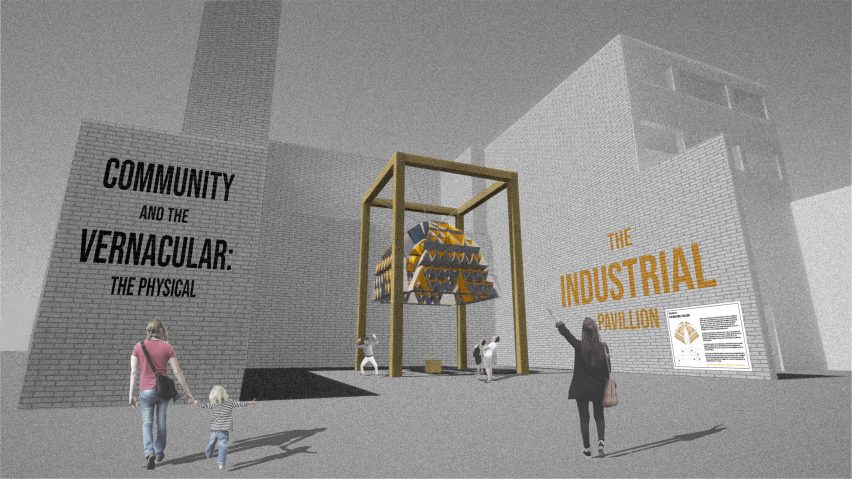Dezeen School Shows: an app that makes use of disused car parks and a community cafe feature in Dezeen’s latest school show by students at the University of the Arts London.
Also included is a museum that examines the role of female workers in the industrial revolution and a scheme that aims to integrate the physical and digital worlds to connect people to their surroundings.
Institution: University of the Arts London
School: Camberwell College of Arts
Course: BA Interior and Spatial Design
School statement:
“Camberwell College of Arts is a renowned art and design college. We give students the space to explore their creativity. Staff will support and challenge you to rethink current practices. Our facilities embrace both traditional craftsmanship and digital technology.
“Our design and fine art courses will make you think about your social responsibility, as well as develop your critical and making skills.
“View our recent graduate’s work online at the Graduate Showcase website.
“Join our online and on-site open days to learn more about Camberwell College of Arts and our courses. Click here for more information.
“For the following projects, Camberwell’s BA Interior and Spatial Design students collaborated with students at IED Kunsthal, a design university located in Bilbao, Spain.
“Students focused on the regeneration of Zorrotzaurre, a post-industrial area of Bilbao built on an artificial island.
“The project’s aim was to design proposals for a former biscuit factory site, which required remote online working with students at IED Kunsthal as they researched and explored the area together.
“Each student created a map of the urban landscape through a variety of media including textiles, projection and interaction.
“Some Camberwell students also visited the site in Bilbao, where they exhibited their urban fabric mappings of the current condition of Zorrotzaurre and design proposals for the future of the island.
“They also took part in a show at the university, as well as delivered presentations and workshops as part of the DRS2022.”
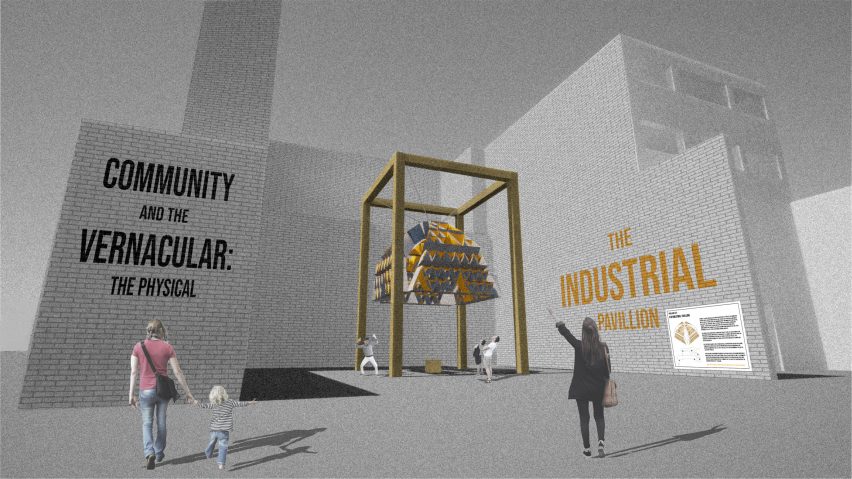
Community and the Vernacular: Physical and Virtual by Lea Fakhouri
“Community and the Vernacular is an expansion of my thesis around the idea that people in today’s society are considered inert consumers that only use the spaces that they inhabit, and are not actually part of the process of designing them.
“My project explores the merging of the physical and digital world to help revitalise the connection between people and space.
“The physical world houses six separate pavilions suspended across the site of the Artiach Cookie Factory in Bilbao, Spain.
“The virtual world houses the united pavilions suspended together to represent the capabilities of the community to inform and transform its topography.”
Student: Lea Fakhouri
Course: BA Interior and Spatial Design
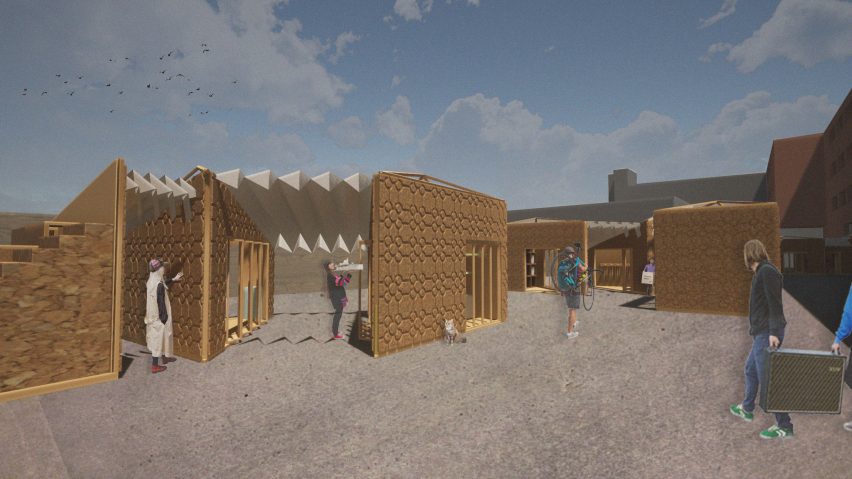
Mobile Community Repair Cafes by Mia Bizard
“Using my research on themes exploring accessibility, connection and communities, this project continues my investigation into the architecture of connection – connecting people, city, and environment.
“Proposing a series of workshops and gallery spaces that essentially become repair cafes, all connected with foldable canopies, this project promotes the reduction of waste and sustainable, social community-focused lifestyles.
“The idea is to bridge and connect these places – located around the island of Zorrotzaurre in Bilbao, Spain – as well as the local community through this fragmented series of spaces.
“It aims to empower residents to take an active part in shaping their communities, as well as building on the legacy of the site by adding a participatory and engaging design that will help promote and attract people to the area.”
Student: Mia Bizard
Course: BA Interior and Spatial Design
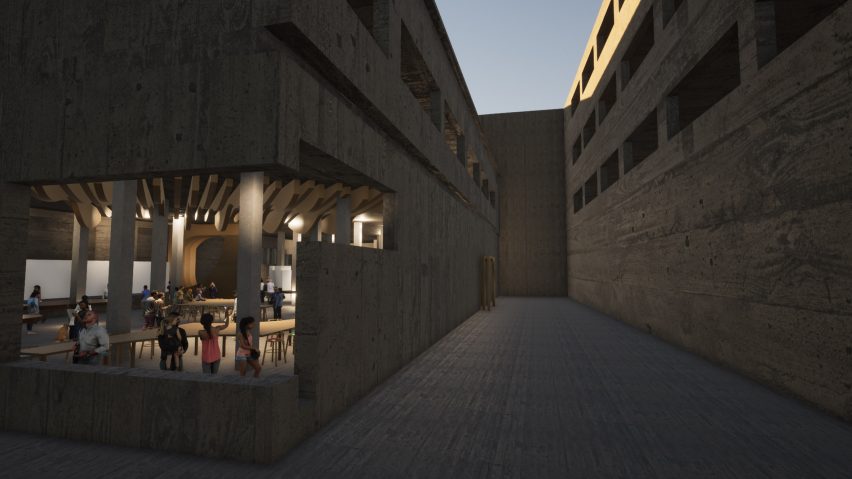
Zorrotzaurre’s Art District by Maya Hammoud
“The project offers a unique experience to its visitors by taking them through a ‘designed walk’ across three spaces: a gallery, an auditorium and a multi-purpose social space.
“The project is aimed at the local community and those with a common interest in Bilbao’s growing art scene.
“The spatial layout explores the act of observing, using thresholds and viewports to make visitors see, experience and question their surroundings.
“The aim of using viewports as a tool for observing fragments of other spaces, allowing sudden interactions to happen between visitors.
“It also forms a deeper understanding of visitor experiences and how it is influenced by the creation of space.”
Student: Maya Hammoud
Course: BA Interior and Spatial Design
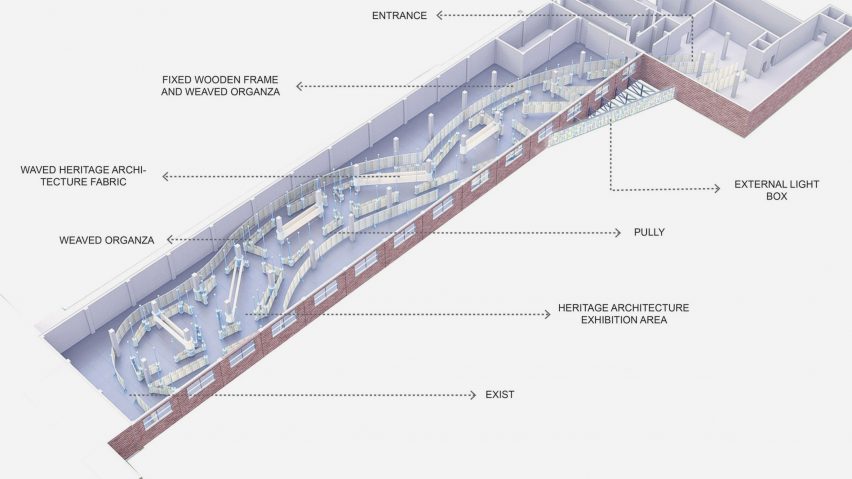
Time Traveller by Qiao Wang
“I created a temporary exhibition to promote local cultural heritage in Zorrotzaurre, Bilbao, Spain.
“This solar-powered installation is based on the simplified shape of Zorrotzaurre, which is intended to provide visitors with a quick tour of the island.
“To arouse the interest of visitors, they will feel as if they are exploring the maze while walking inside the installation, just like they are discovering and seeking knowledge in an unfamiliar city.
“This project promotes the industrial heritage culture of the region to visitors from all over the world while boosting the local tourism economy and providing educational cultural dissemination.
“In the installation, I used the pulley structure of the factory and woven fabric, which was inspired by my map. All materials used are sustainable.”
Student: Qiao Wang
Course: BA Interior and Spatial Design
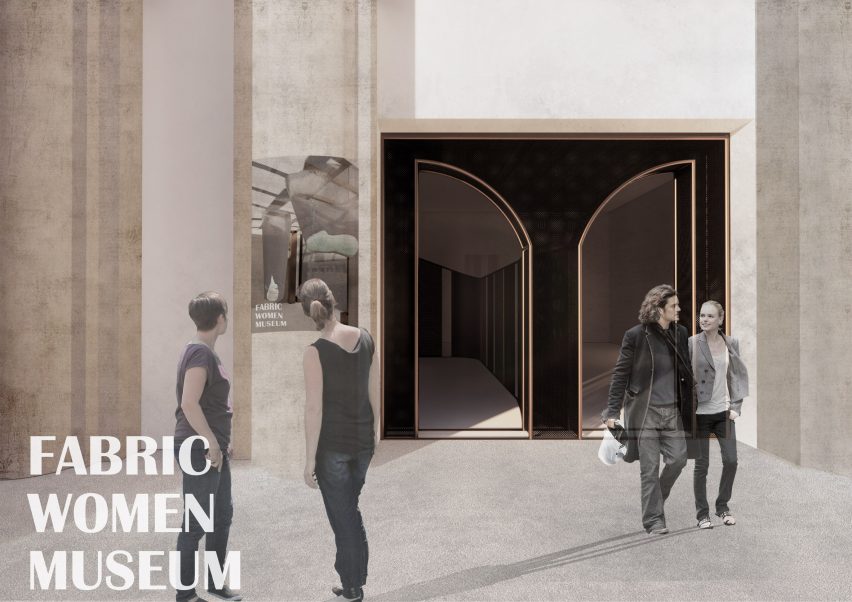
Fabric-Women-Museum by Shiyuan Liu
“Fabric-Women-Museum aims to spatialise the inequalities suffered by women in the workplace during the industrial revolution.
“The project is based on research into the history of Artiach during the industrial revolution when approximately 80 per cent of the workers were women.
“Although Artiach offered work opportunities for women, their working conditions and treatment were poor.
“The design translates the inequality of women in the workplace into four thematic rooms: control, inconvenience, isolation and vulnerability.
“The interactive exhibition helps visitors understand the conditions suffered by women workers in workspaces during the industrial revolution.”
Student: Shiyuan Liu
Course: BA Interior and Spatial Design
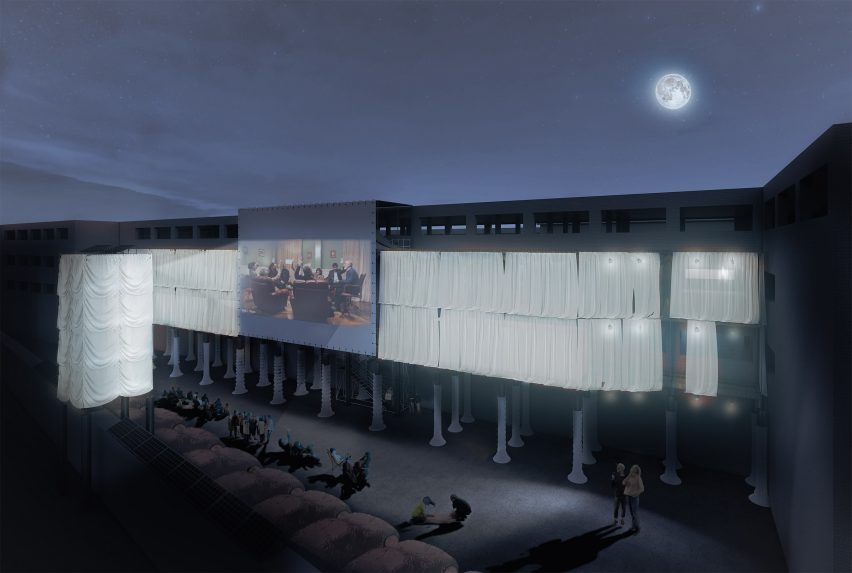
(Junk)scape – Rethinking and Recycling Non-Places by Kiwi Chan
“This project represents creative ways to transform car parks from non-place, anonymous spaces to ones with urban character.
“The (Junk)scape app is a system and service that proposes efficient uses for ‘wasted’ spaces and energy around ‘non-places’ i.e. car parks.
“This app rethinks and recycles underutilised parking lots by using a renting and scheduling system.
“My primary design proposal for my rented ‘non- place’ explores ‘placeless’ people, in hopes to provide support for the local homeless community and raise awareness around this ‘invisible class’ through film.
“This proposal also aims to incorporate responsible involvement with Bizitegi, a non-profit organisation that contributed to the construction of services for individuals from the worlds of exclusion and mental illness in Bilbao.”
Student:Kiwi Chan
Course: BA Interior and Spatial Design
Partnership content
This school show is a partnership between Dezeen and the University of the Arts London. Find out more about Dezeen partnership content here.

